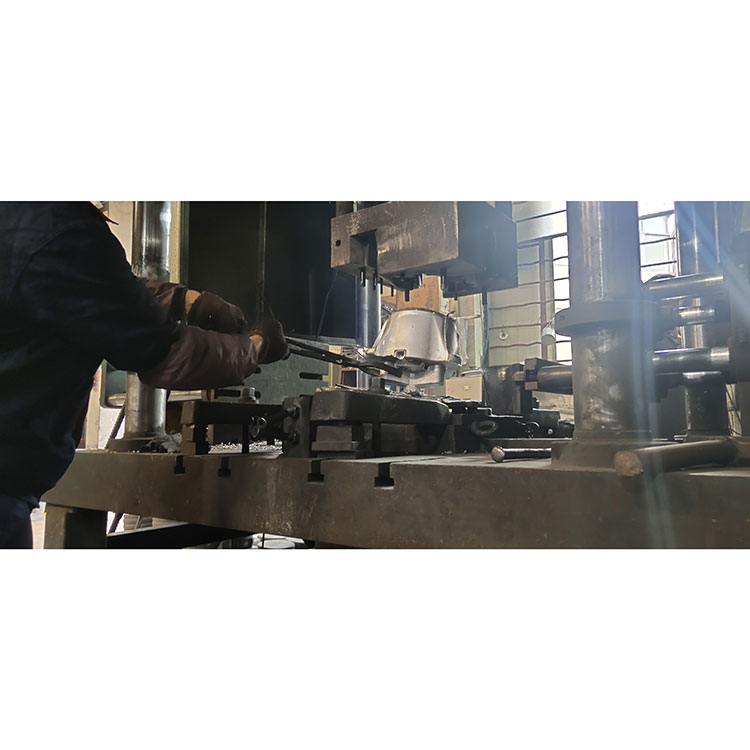Process Overview of Low Pressure Aluminum Casting
2024-06-18
Low-pressure aluminum casting is a manufacturing process used to produce high-quality aluminum parts with excellent mechanical properties and dimensional accuracy. Here’s an overview of the process, its benefits, and its applications:
Process Overview:
1. Mold Preparation:
- A reusable steel mold, also known as a die, is prepared. The mold consists of two halves that come together to form the shape of the desired part.
2. Melting Aluminum:
- Aluminum is melted in a furnace to the required temperature, typically around 700°C to 750°C (1292°F to 1382°F).
3. Pressurizing the Melt:
- The mold is placed above the molten aluminum. A sealed chamber below the molten aluminum is pressurized with air or an inert gas, typically between 0.1 to 1 bar (1.45 to 14.5 psi).
4. Filling the Mold:
- The pressure forces the molten aluminum up through a riser tube into the mold cavity. The molten metal flows smoothly and evenly into the mold due to the controlled pressure.
5. Solidification:
- The aluminum solidifies as it fills the mold, starting from the farthest point and moving towards the source, which helps minimize porosity and other casting defects.
6. Cooling and Ejection:
- Once the aluminum has solidified, the mold is opened, and the part is ejected. The part is then typically subjected to further cooling if necessary.
7. Finishing:
- The cast part may undergo additional processes such as trimming, machining, heat treatment, and surface finishing to meet final specifications.
Benefits:
1. High-Quality Parts:
- Produces parts with excellent mechanical properties and fine-grain structures, resulting in high strength and durability.
2. Dimensional Accuracy:
- Offers superior dimensional accuracy and surface finish compared to other casting methods, reducing the need for extensive post-processing.
3. Reduced Porosity:
- Controlled pressure and solidification result in lower porosity and fewer casting defects, improving the integrity and reliability of the parts.
4. Material Efficiency:
- Better utilization of material with minimal waste, as the controlled filling reduces the need for excessive sprues and risers.
5. Versatility:
- Capable of producing complex geometries and thin-walled parts that are difficult to achieve with other casting methods.
6. Cost-Effective for Medium to Large Production Runs:
- While the initial setup cost for molds and equipment is high, it becomes cost-effective for medium to large production volumes due to the reusability of molds and the efficiency of the process.
Applications:
1. Automotive Industry:
- Used for manufacturing critical components such as engine blocks, cylinder heads, suspension components, and transmission housings.
2. Aerospace Industry:
- Produces lightweight, high-strength components such as aircraft structural parts, brackets, and housings.
3. Consumer Electronics:
- Used for making durable and lightweight casings and structural components for laptops, smartphones, and other electronic devices.
4. Industrial Machinery:
- Manufactures parts for pumps, compressors, and other machinery that require high precision and reliability.
5. Medical Equipment:
- Produces components for medical devices and equipment that require high standards of precision and cleanliness.
Considerations:
1. Initial Investment:
- Requires significant initial investment in molds and specialized equipment, making it suitable for high-volume production to justify costs.
2. Process Control:
- Requires precise control of pressure, temperature, and mold design to achieve optimal results, necessitating skilled operators and advanced monitoring systems.
3. Mold Maintenance:
- Molds need regular maintenance and care to ensure longevity and consistent quality of cast parts.
In summary, low-pressure aluminum casting is an advanced casting method that provides high-quality, precise, and durable aluminum parts suitable for a wide range of industries. Its ability to produce complex geometries and superior surface finishes makes it a preferred choice for many high-performance applications.



